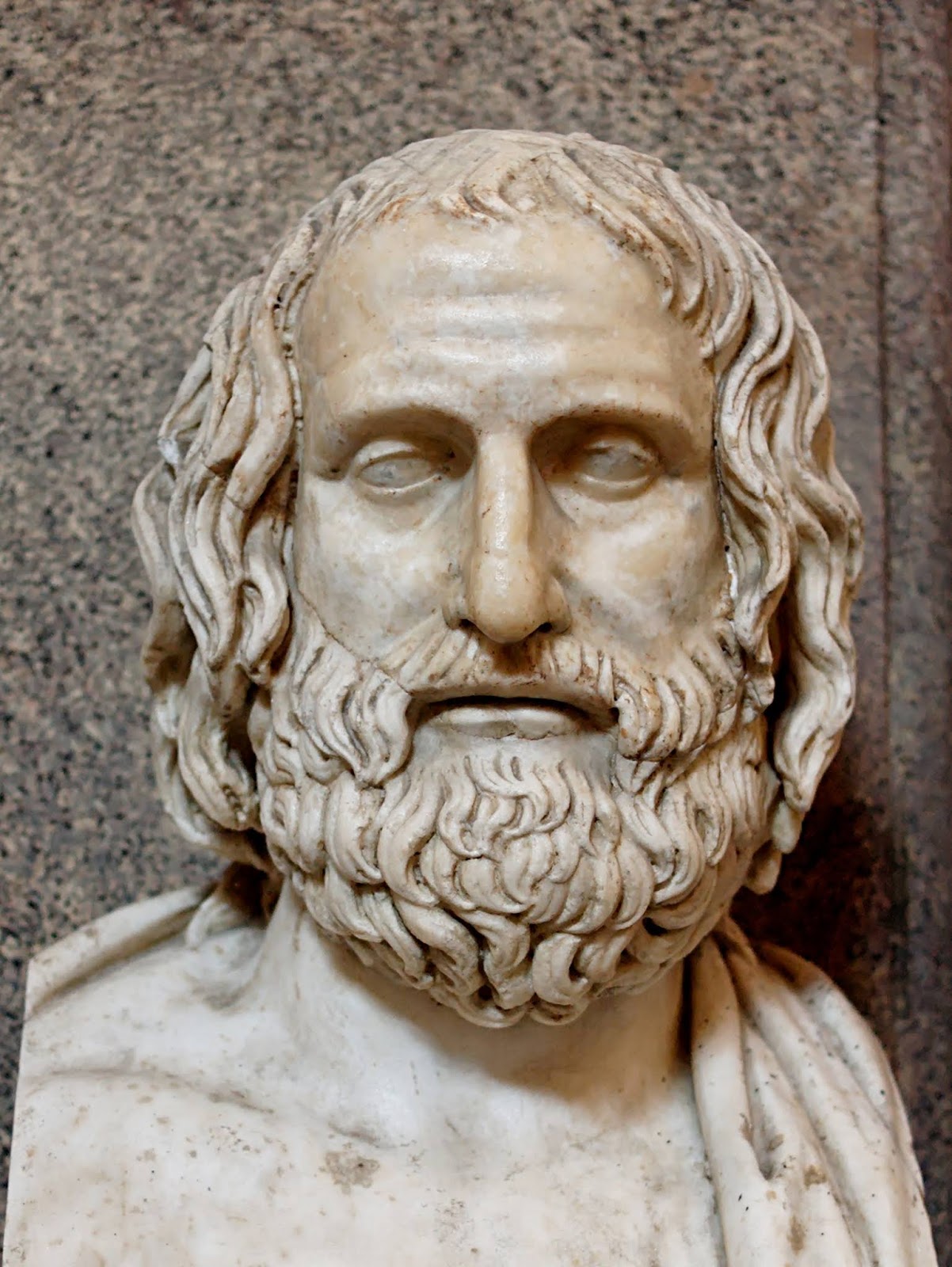Euripides 330 BCE
“Euripides is one of the three Athenian tragedians whose works we possess in more than fragments; indeed, the surviving plays of Euripides outnumber those of Aeschylus and Sophocles combined (seven each compared with Euripides’ eighteen, or if we count the probably spurious Rhesus, nineteen). Some of this is due to chance, but Euripides was the most performed, most read, most widely admired tragedian of the later Greco-Roman world, and arguably the most influential on later drama. From the evidence available for comparative judgments (admittedly sparse), his works appear to have offered the greatest range of moods and tones, provided the most unsettling perspectives, and engendered the greatest controversy. Euripidean drama still challenges theatergoers, readers, and critics alike.
“Very little can be said with certainty about Euripides’ life. The anecdotal information in the ancient “Life of Euripides” is suspect.... We do know that Euripides had only recently died when the comic poet Aristophanes produced his Ranae (Frogs, which stages a contest in the Underworld between Euripides and Aeschylus) in 405. But the story that the poet went into exile at the court of Macedon late in life, embittered by his lack of success as a dramatist and the ridicule to which he was subjected in comedy, may be apocryphal.... The claim in the “Life” that the poet died torn apart by wild dogs while in exile certainly looks like an invention prompted by the fate of Pentheus in Bacchae.
“Despite Aristophanes’ repeated joke that Euripides’ mother was a vegetable vendor, there is every reason to believe that he came from comfortable circumstances.... The amusing caricatures of Euripides in Aristophanes, where he appears as a character in Acharnenses (Acharnians) and Thesmophoriazusae (Women at the Thesmophoria) as well as Frogs, no doubt contributed to his reputation as an intellectual filled with newfangled ideas, by turns clever, impractical, sarcastic, and fastidious. They also give the clear impression that, however outré and off-putting as he may have seemed to some, others adored his powerfully theatrical and intellectually probing dramas."
-taken from columbia.edu link below
 |
| Bust of Euripides. Marble, Roman copy after a Greek original from ca. 330 BC. Current location: Museo Pio-Clementino, Sala delle Muse. |
Source:
https://commons.wikimedia.org/wiki/File:Euripides_Pio-Clementino_Inv302.jpg
https://fineartamerica.com/featured/euripides-sheila-terry.html
Quote:



Comments
Post a Comment